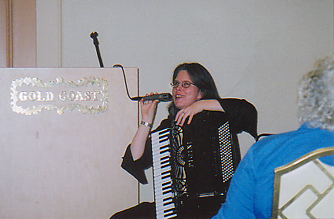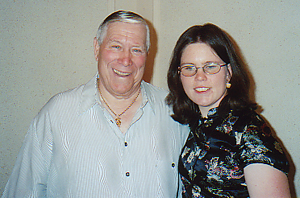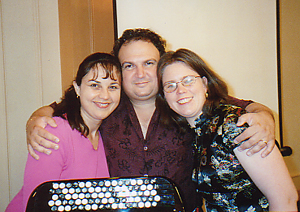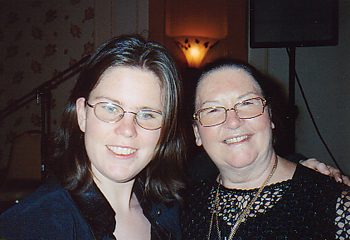Preface At
no stage have I, nor will I, profess to be an expert on the life of Pietro
Frosini. As an accordionist of the next millennium, I can only offer my
own observations and interpretations of his music and his enormous impact
on accordion playing today. Here, then, is a brief history of the life of
Pietro Frosini, with information taken from magazines and articles written
during his lifetime and following his death. It is by no means complete,
but I hope that it will be enlightening. At
no stage have I, nor will I, profess to be an expert on the life of Pietro
Frosini. As an accordionist of the next millennium, I can only offer my
own observations and interpretations of his music and his enormous impact
on accordion playing today. Here, then, is a brief history of the life of
Pietro Frosini, with information taken from magazines and articles written
during his lifetime and following his death. It is by no means complete,
but I hope that it will be enlightening. Pietro GuifrideIn Catania, Sicily, in 1885, Pietro Guifride was born. An apparently inquisitive boy, he took to music at an early age, playing on his father's diatonic button accordionAt the age of seven, his father bought him a larger, chromatic accordion, on which he was able to play the popular, operatic tunes of the day. Catania was also the birthplace of one of opera's great composers, Vincenso Bellini, whose work, little Pietro Guifride was quoted as having mastered at an early age. I think I can safely say that Frosini's love of orchestral music stemmed from his learning of other, more "acceptable" musical instruments, the clarinet, cornet and other wind instruments. An understanding of wind instruments helped him to master good bellows technique and phrasing that, by now, we take for granted. He served in Malta, as a member of the British Naval Band, playing first cornet. It was when he was serving in Malta, that he was approached by a talent scout for the Orpheum Vaudeville Circuit. It was at this time that the stage name of "Frosini" was chosen, which would become his worldwide trademark.  Frosini
relocated to America, playing on the vaudeville circuits, until silent films
took over. (A
to Z of the Accordion-2003 - Rob
Howard). He then went onto radio and, in 1934, he was doing 90 minute
broadcasts six mornings a week for radio WOR and 60 minute broadcasts for
WINS. Frosini
relocated to America, playing on the vaudeville circuits, until silent films
took over. (A
to Z of the Accordion-2003 - Rob
Howard). He then went onto radio and, in 1934, he was doing 90 minute
broadcasts six mornings a week for radio WOR and 60 minute broadcasts for
WINS.He worked towards producing an American manufactured instrument of high quality, developing a good tone quality. Encouraged, by Guido Diero, he decided not to change to piano accordion, but to keep the three-row button accordion, with a false piano keyboard. He was candid about giving advice, but he was not shy. When asked, in the January 1935 Louis Siquier publication, Accordion News, who he thought, of all the accordion players, to have the best expression, he said "I know of only three and I am all three". It seems he was, like his music, straightforward and to the point. Frosini married one of the dancers from one of the vaudeville shows and continued his concert career, although ill health prevented him from keeping such a busy schedule in later years. He was proud of the fact that he had never missed an engagement in his life. Accolades followed Frosini wherever he went and Charles Magnante was quoted as professing him the greatest button accordionist in the world. Composition and StyleFrosini was renowned for his compositional techniques, including his mastery of the bellows shake. He first saw a bellows 'shake style' at age 9, performed by Salvatore Porto, a fine accordionist, whose father Rosario, was an accordion manufacturer in Catania. Rosario actually built the first accordion purchased for Frosini. (The Golden Age of the Accordion-1992. Edward Chavez, Ronald Flynn, Edwin Davidson). Many of his compositions include passages of bellows shake, which are usually the climaxes of each piece.However, if you strip away the layers of technical brocade, melody was of paramount importance and, in his regular question and answer columns in 1934/5 editions of the Louis Siquier publication, Accordion News, he stresses the importance of balancing a melody line with a short and light bass line. He spends a great deal of time in the following edition of the magazine, explaining that right hand chords should not interfere with the general dynamic flow of the music. A melodic line should not suddenly increase in volume, if there is suddenly a chord in the right hand. Frosini advised that, should this be the case, the right hand chord should be omitted all together. Again his inspiration comes from Bellini. The left hand should act as a rhythmic structure for the piece, but it should never be too intrusive. A long held bass note should never override the right hand melody. One of the most fundamental keys to playing Frosini well, lies in one of his answers. When asked how to play fast semi-quaver passages, he replied that slow practice was the key. Correct fingering was essential and slow and sure repetition would ensure a steady performance. He stressed the importance of "playing within one's own ability", and that the slower passages were just as important, (this idea fostered, one would assume, unconsciously, if not consciously, by Bellini, who was renowned for his beautiful melodic lines). "You should not try to play Hanon, if you can't play "Home Sweet Home".  There
is not one composition of Frosini's, that doesn't contain a beautiful melody
of some kind. Hidden somewhere in a cluster of semiquavers, will be a beautiful
melody, which must be heard. Likewise, each phrase has a distinct direction,
whether crescendo or diminuendo. There
is not one composition of Frosini's, that doesn't contain a beautiful melody
of some kind. Hidden somewhere in a cluster of semiquavers, will be a beautiful
melody, which must be heard. Likewise, each phrase has a distinct direction,
whether crescendo or diminuendo.Add to this the character; each piece has its own individual style, which is usually indicated in the title of the piece. Silver Moon, Serenata Primaverile, Olive Blossoms and Fragrant Flowers conjure up ideas of spring, or romance. They are lovely waltzes. Likewise Bubbles, Accordion Jitters, Cordinella, Flashing Fingers and Hot Fingers have a strong sense of rhythm and pulse. They have a strong left-hand foundation, over which the sparkling right hand passages must flow effortlessly and with computer evenness. Bel Fiore is a tarantella; Gauchos on Parade, Jolly Caballero, The Gay Picador and The Brave Matador are all paso dobles. Bel Viso, (or "Pretty Face") is just that - a fresh and simple, bright piece in structure. Spic 'n' Span, likewise. Of the more "serious" music, the three rhapsodies stand as works of symphonic proportions. They have dramatic introductions, which lead on to quieter, yet harmonically intense sections, building to a climax. The Russian and Italian Fantasies, Carnival of Venice, The Alpine Shepherd, Britannia and Dark Eyes are examples of a virtuoso style of collating various folk tunes and, by interspersing cadenzas and adding interesting variations, become great concert showpieces. The drama of these pieces, coupled with beautiful, simple melodies, ensures their success with the general public. This is the genius of Frosini. Frosini's Symphonic March is one of my favourites, because it is such a brilliant example of where the music can take you. It is symphonically rich, with brassy chords and the delicate intricacies of string or woodwind playing in the softer passages. More than anything, I enjoy the piece because the dynamics seem to flow so naturally and the piece, which has no patriotic nationality, is uncommonly rousing. Remarkably, no registration changes are required. Indeed, Frosini's choice of registration was limited on the early accordions on which he played, therefore he let the music express itself, rather than relying on elaborate tonal changes. However, I believe the key to Frosini's long lasting and widespread success is that his music has such a wide appeal to audiences both young and old. Some may well, (and correctly so), argue that his music is dated, but it is still satisfying to listen to and to play. Any student, young or old, if they have the technical proficiency to play Frosini music, can only enjoy the satisfaction of pulling off the runs and other technical difficulties. The music is fun to play. But the greatest problem we face today is to make this music accessible to the public. I have chosen MIDI as my form of communicating with the wider public and even now, I cringe at the idea of playing Frosini on MIDI as sacrilegious and scandalous.  Therefore,
I use MIDI to enhance the music and add something to which the people of
today can relate. And they enjoy it; I am proud to be bringing the music
of Pietro Frosini to the general public each week, as I busk in Melbourne. Therefore,
I use MIDI to enhance the music and add something to which the people of
today can relate. And they enjoy it; I am proud to be bringing the music
of Pietro Frosini to the general public each week, as I busk in Melbourne.The music is merely a happy sound, not a piece of music that is dated - the general public doesn't know that. They just like what they hear. Careful addition of electronic sounds ensures the music has the right orchestration. And played with the same drive and rhythm, with which I would play any new pop song, the music, with its lovely melodies, appeals to the older generation, for whom it was written, as well as being born again for younger generations. This should be our aim with all of the accordion music we attempt. However, with Frosini, we are given a wonderful medium through which to promote our beloved instrument. His aim was that students should have fun playing the accordion. He pioneered the concept of an accordion orchestra and the correct way to play. When asked by a reader in the December 1934 Accordion News if the bass box should be removed from the instrument, if it was not to be used in orchestral playing, he simply replied "No." Here again, balance was essential. It was always Frosini's aim to have the accordion accepted into the normal musical curriculum. In an article for the London, Modern Accordion Publishers publication Accordion Review, May 1955, Adrian Dante (1914-2005) outlines the turmoil surrounding Frosini's refusal to accept a scholarship to the Royal Conservatoire of Music in Milan, on the grounds they would not accept accordion. Against his parents' wishes, he ran away from home and fatefully joined the British Navy. His foresight has not quite been realised throughout the world, although one can study accordion at some university in most major cities. Frosini's music fights the will to be academic with that of popularising the instrument and he leaned towards the latter. We are much indebted to his crusade. Bernadette Conlon Copyright - 2005 |